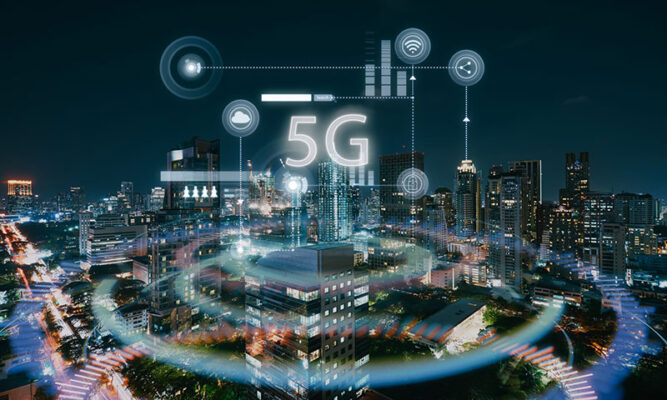5G Technology and the Next Era of Mobile Connectivity
By Stan Gray
April 10, 2025
Estimated reading time: 4 minutes

Many assume that newer technologies will replace older technologies. While this paradigm is true in most instances, it isn’t with 5G and technologies like Wi-Fi, wired broadband and cable modems.
5G’s ultralow latency and expanded bandwidth will make cellular similar to Wi-Fi and legacy technologies. However, 5G will complement their capabilities rather than replace them.
In some use cases, cellular 5G will be preferred over wired broadband. Nevertheless, businesses must examine such decisions case by case.

The 5G rollout has taken longer than expected. However, GSMA anticipates that 5G networks will cover one-third of the world’s population. It will account for 1.2 billion connections by 2025.
As a mobile industry representative, GSMA is pivotal in shaping 5G’s ecosystem development. To that end, GSMA works closely with mobile operators that are pioneering 5G in various vertical industries.
5G stand-alone (SA) networks are also increasing their global footprint. For some time, SA was the handbrake for 5G.
However, 5G will surpass the capabilities of 4G between 2025 and 2029. 5G’s traction is building because of the mid-speed segment from Release (Rel) 17 and 5G Reduced Capability (RedCap). Time has proven that sub-6 has better range, coverage, bandwidth and frequency than mmWave.
As stated above, 5G is not meant to replace existing technologies. It will continue working alongside networking technologies like LTE and Wi-Fi. In particular, the Wi-Fi market is expected to grow from $14.5 billion in 2023 to $39.4 billion by 2028. Wi-Fi and cellular will become more specialized and improve quality and performance for cases they excel in addressing.

5G sparked a revolution in Internet of Things (IoT) connectivity. It enables unique use cases like self-driving cars and drones. In addition, it empowers industries like manufacturers and health care to develop new IoT applications.
IoT deployments utilize 5G and advances in current wireless and wired networking technologies. A platform of solutions, including advanced 4G LTE and edge processing, supports the connected mobile IoT edge expansion. These technologies will continue operating alongside emerging 5G networks.
With IoT use cases like smart manufacturing, companies have begun looking at how 5G can augment existing technologies. In industrial IoT (IIoT) applications, manufacturers are keen to reduce reliance on wired technologies or anything with sensors, such as:
5G’s low latency and capacity will replace wiring in some cases and be complementary in others.
Private 5G may also be better than Wi-Fi for IoT applications that require fast mobility and ultralow latency. For example, private 5G networks are preferable to Wi-Fi in controlled environments like factories with many IIoT devices. They are also suitable for dense environments like stadiums and train stations.
Telit Cinterion’s 5G and Wi-Fi products leverage the latest 3GPP releases. Our solutions empower you to meet the demands of the 5G era.
Speak with our experts to discover how your enterprise can reap the transformative benefits of 5G IoT.
Editor’s note: This blog was originally published on 4 May 2020 and has since been updated.